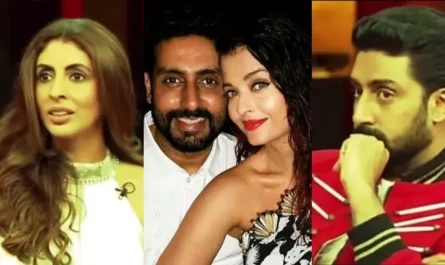” ;}
}
if(document.getElementById(‘subwait_top’)){document.getElementById(‘subwait_top’).style.visibility = ‘hidden’;}
}
else
{
document.getElementById(div_errmsg).innerHTML = “
“;
document.getElementById(div_errmsg).style.display = “block”;
if(document.getElementById(‘subwait_top’)){document.getElementById(‘subwait_top’).style.visibility = ‘hidden’;}
if(document.getElementById(subscribebtn)){document.getElementById(subscribebtn).disabled = false;}
}
}
}
if (subreq.readyState == 1)
{
if(document.getElementById(‘subwait_top’)){document.getElementById(‘subwait_top’).style.visibility = ‘visible’;}
if(document.getElementById(subscribebtn)){document.getElementById(subscribebtn).disabled = true;}
}
}
return false;
}
Mithun Chakraborty started from scratch in bit roles and had no Godfather backing him. Yet, remarkably, his career now straddles six decades and he continues to win acclaim, observes Dinesh Raheja.
IMAGE: Mithun Chakraborty in Adat Se Majboor.
It is the best of times for Mithun Chakraborty.
Though the veteran actor began 2024 on a grim note when he was hospitalised for an ischemic cerebrovascular stroke of the brain, he has since bounded back. And now, the plaudits are flooding in.
Mithun has been accorded the prestigious Dadasaheb Phalke award, and will accept it on October 8.
Earlier this year, he had been conferred with the Padma Bhushan as well as the Filmfare Award Bangla for Best Actor Critics, thanks to his revelatory performance in Kabuliwala (2023).
Mithun’s is the story of The Outsider, who has through sheer grit carved out a place for himself within the charmed circle.
The actor started from scratch in bit roles and had no Godfather backing him. Yet, remarkably, his career now straddles six decades and he continues to win acclaim.
Mithun rocketed to the top, fired by the primal, on-the-hunt quality that he exuded whether as a zestful disco dancer or as Truth’s soldier in countless potboilers.
IMAGE: Mithun Chakraborty in Mrigayaa.
Over the years, the quality of Mithun’s films has fluctuated wildly but the three-time National Award winning actor keeps his nose to the grindstone and continues working.
He has done over 250 Hindi films in the main role. So, in sheer numerical terms, Mithun has played the leading man in more Hindi films than any other actor, before or since.
Initially, though, Mithun seemed to have little going for him. The science graduate from Kolkata studied cinema at the FTII (Film and Television Institute of India) but had to scrounge for work in Mumbai.
The 1976 Amitabh-Rekha starrer Do Anjane credits him as ‘Mitun Chakravarty’ and affords a fleeting glimpse of the young actor as a street ruffian who scraps with Amitabh.
Mithun’s luck turned with his first major role. He delivered an eviscerating performance as the livewire tribal hunter who grapples with colonial era justice in renowned art film director Mrinal Sen’s Mrigayaa (1977).
Mithun exuded a raw potency in the scenes when he’s tracking prey, human or animal. It won him a National Award for Best Actor.
His bronze, bare-chested physique in the film also caught the attention of mainstream filmmakers.
Stardom finally came Mithun’s way in 1979 with the twin successes of the Bond-like spy thriller, Suraksha and the Rajashri musical, Taraana.
IMAGE: Mithun Chakraborty and Ranjeeta on the Suraksha poster.
As Gunmaster G9 in Suraksha, Mithun cut a dashing figure whether he was fighting the villains or grooving like Travolta to the soundtrack by Bappi Lahiri who introduced disco beats to Hindi cinema with the song Mausam Hai Gaane Ka.
After these successes, Mithun all but ran out of ink signing films by the dozen. Many co-starred Ranjeeta, his hit co-star in both these films.
And while he did sign films with prominent names like Dulal Guha, Pramod Chakravorty Basu Chatterji and Shakti Samanta, many were also unabashedly B-grade.
But talent shines like a diamond even in the rough.
Mithun made a big splash with Hum Paanch (1981), which like Mrigayaa saw him playing a character on the cusp between innocence and raw power.
As Bheema, the labourer unfettering his feudal bonds in this modern parallel to the Mahabharata, Mithun forcefully communicated the anger of the dispossessed.
Mithun was now on a league of his own, signing films with A-list actresses like Zeenat Aman (Humse Hai Zamana), Parveen Babi (Ashanti) and popular youngsters like Rati Agnihotri (Shaukeen).
IMAGE: Mithun Chakraborty in Disco Dancer.
The buzz around the actor reached its crescendo with the release of the 1982 smash hit Disco Dancer.
Sporting a shirt open to the waist, trousers laminated to his legs and high heels, Mithun’s lightening moves to a string of dance floor favorites like I Am A Disco Dancer and the unfiltered emotionalism of Yaad Aa Raha Hai Tera Pyar turned him into a sensation.
Mithun continued to sign stacks of films, and for several years the successes kept rolling in — whether it was family dramas like Ghar Ek Mandir (1984) and Swarg Se Sunder (1986) or thrillers like Aandhi Toofan (1985) and Watan Ke Rakhwale (1987).
Mithun’s films were largely reflective of the 1980s when creativity often took a back seat to the box office.
His biggest hit in this period was the romantic superhit Pyar Jhukta Nahin (1985) opposite Padmini Kolhapure.
It was yet another version of the status-differences-breaking-a-marriage theme successfully brought onscreen by Jab Jab Phool Khile in the 1960s and later by Raja Hindustani in the 1990s.
Mithun signed a dozen odd films with Padmini Kolhapure and became the second highest paid actor in Bollywood.
IMAGE: Mithun Chakraborty in Agneepath.
Despite a Filmfare Award for the Best Supporting Actor in the Amitabh vehicle Agneepath (1990), Mithun’s tryst with big banners and major directors like Manmohan Desai (Ganga Jamuna Saraswati) and Ramesh Sippy (Bhrashtachar) was not as successful as his work with directors like B Subhash and Deepak Bahry.
In the early 1990s, Mithun’s career graph hit a low, and even a couple of films with Mahesh Bhatt (Tadipaar, Naaraaz) could not halt the slide. Mithun decided he needed a break.
Even when in Mumbai, Mithun had preferred his bungalow in scenic Madh Island to the frenzy of Bollywood hotspots. Then, he further withdrew to the hill station of Ooty. While he became an entrepreneur with his own hotel, The Monarch, he also set up a veritable one-man film industry there.
Some of his 1990s films like Jallad (1995) fetched him critical acclaim but most of his films were action-filled assembly line productions.
For a while, it seemed his undeniable talents were being compromised by the films he chose to appear in.
His sheer prolificity and professionalism resulted in 78 of his films releasing every year well into the new millennium.
IMAGE: Mithun Chakraborty in Tahader Katha.
Bengali cinema afforded him meatier roles at this stage, and Mithun collaborated successfully with Buddhadeb Dasgupta (1993’s Tahader Katha won him his second National Award) and Rituparna Ghosh (Titli, 2002).
The actor won his third National Award for playing the guru Ramkrishna in the bilingual, Swami Vivekananda (1997).
Character roles started coming Mithun’s way thereafter, and he grabbed the opportunity to showcase his art.
He was effective in Mani Ratnam’s Guru (2007) as the morally upright media baron whose principles drive him to file a court case against the titular character, his own family friend and protégé.
The actor sharpened his comic skills too with Golmaal 3 (‘Jinke ghar sheeshe ke hote hai na… woh basement mein kapde badalte hai,’ his character quips).
And he was fully qualified to play the Grand Master on the long-running television reality show Dance India Dance. His trademark ‘Kya baat‘ delivered in his archetypal style became a popular, oft-quoted catchphrase.
IMAGE: Sridevi and Mithun Chakraborty in Waqt ki Awaz.
Mithun, 74, has weathered many storms.
For four decades, he has been married to actress Yogeeta Bali (they fell in love after working together in early 1980s films like Khwab and Be-Shaque).
He often cooks for his four children on their weekend cheat day. But on other days, he prefers to work.
As long as he has his way, Mithun refuses to slow down.




